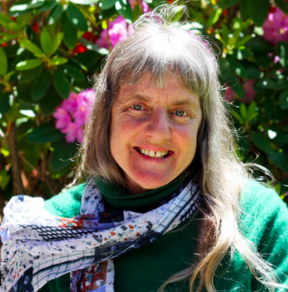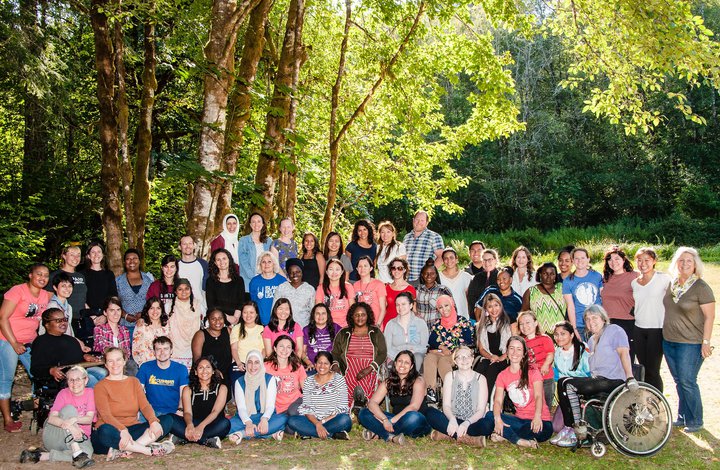We are undeniably in an era of rapid change. During these uncertain, complex times, when many are peacefully disrupting the status quo, we need to move forward differently, to be more innovative, more inclusive. We need to transform our thinking and acting in ways that will lead to justice and equity for all.

I am pleased to share with you the innovative approach used by Lever for Change, an affiliate of the John D. and Catherine T. MacArthur Foundation. It’s an approach which I believe will pave the way for philanthropic leaders to do better and to be better.
Our team at Mobility International USA (MIUSA) had the honor of reviewing the finalists for two competitions: 100&Change and Economic Opportunity Challenge. All finalists were invited to access a webinar, which provided an overview of disability inclusion principles.
Finalists also received a checklist for making projects inclusive of people with disabilities in areas ranging from staffing to project implementation and evaluation. Of course, in all of these areas, organizations are held to the standards of their country’s disability laws and policies. However, we wanted applicants to reflect on whether they were meeting or exceeding the minimum requirements of inclusion.
Perhaps the most revolutionary strategy was to ask all Lever for Change competition applicants to describe how their projects would proactively include people with disabilities at all levels, and to explain how they would budget for the costs of any disability-related accommodations, such as sign language interpreters, web accessibility audits, renting physically accessible venues, and providing reading materials in accessible formats, among other solutions.
Even projects that do not have a specific “disability focus” should be exploring how the world’s largest minority population can be considered not only as beneficiaries of their project’s services, but as contributors – staff, consultants, trainers, and so on. I can’t think of ANY project that should not and could not include people with disabilities.
Requiring applicants to articulate – and budget for – their proactive strategies to include people with disabilities, will ultimately change the status quo for people with disabilities.
If you are not reaching people with disabilities, you are not truly reaching the poorest of the poor. You are not truly reaching women and girls, or ethnic minority or LGBT communities, or the most vulnerable among us.
In requiring applicants to answer questions about disability inclusion and budget allocations for disability-related reasonable accommodations, Lever for Change joins others in the donor community who are pioneering real change for people with disabilities.
Of course, it’s not enough to just ask the questions; donors must also hold their grant recipients accountable, and ensure that plans are put into practice. Although many organizations are passionate about diversity, equity and inclusion, too often they leave out people with disabilities from these initiatives. Disability is an identity and a community in its own right.

Organizations need to think more holistically about what constitutes a “problem” and a “solution.” For instance, many organizations invest heavily in preventing and curing disease, but what I don’t see nearly as often is investment in individuals and communities to ensure that people with disabilities have access to health care, education, and employment opportunities. If a project devotes significant funds to eradicate a disease that causes blindness, couldn’t it also provide scholarships for blind people to fund their education?
Perhaps my most joyful moments throughout this review process for Lever for Change have been when competition finalists followed up with MIUSA on our written comments and suggestions. Each applicant has expressed how thankful the team was to receive the checklist on disability inclusion, which helped them enhance their work and include more people with disabilities.
At MIUSA, we are promoting new strategy for change: moving from “inclusion” to “infiltration.” This reflects a more urgent, strategic and intentional approach, in which people with disabilities recognize that we belong in every program. We do not wait to be “included.” We “infiltrate” every program, every service, and every opportunity to contribute as leaders, staff or consultants.
Similarly, organizations striving to be more inclusive need “reverse infiltration”: proactively and intentionally seeking out expertise from people with disabilities. Such partnerships can lead to a positive framework that will allow the organization or foundation to uphold their mission.
As a disability-led organization working on disability rights with a network of people with disabilities from around the world, MIUSA has been honored to share our expertise with foundations and organizations striving to be more disability-inclusive. It was especially rewarding for me as a wheelchair rider and as a MacArthur Fellow to serve as a consultant for Lever for Change and the MacArthur Foundation.
I want to thank the competition applicants who are working to “infiltrate” the world and make it a better place for everyone.